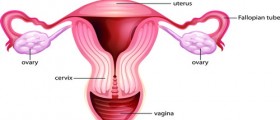
First off, we have to mention that there are in fact several methods to complete a tubal ligation. They include clipping the tubes closed, severing them and stitching them up, or severing the fallopian tubes and then burning them shut. Likewise, there are different ways to reach the fallopian tubes to carry out the procedure, including laparoscopic surgery, which is minimally invasive, an abdominal incision which is a good option for women who are already undergoing abdominal surgery, if they are giving birth by cesarean section, for instance.
Here are some of the side effects associated with a tubal ligation. You may experience all of them, but that is unlikely. Most of them are temporary:
Recovery from the surgery, including pain, abdominal bloating and tenderness, and feeling groggy from general anesthesia. General anesthesia, the usual anesthetic method for tubal ligations, has its own side effects. Women interested in having their tubes tied should discuss these with their doctor and anesthesiologist. Infection following surgery. The incision wound separating. Heavy blood loss following or during the tubal ligation, sometimes requiring a blood transfusion. Adhesions forming at the site where the fallopian tubes were severed. A changed menstrual cycle, including heavy and painful periods, can be noticed by some women following a tubal ligation. In some cases, the tubes reconnect. Women who do get pregnant after having their tubes tied are at a higher risk than others of suffering from an ectopic pregnancy.- healthfinder.gov/api/Outlink/Search/https/www.hhs.gov/opa/pregnancy-prevention/sterilization/female-sterilization/index.html?_label_=Read+more+about+sterilization+for+women
- medlineplus.gov/ency/article/002913.htm
- Photo courtesy of Saltanat ebli by Wikimedia Commons: commons.wikimedia.org/wiki/File:Babcock.JPG

















Your thoughts on this
Loading...